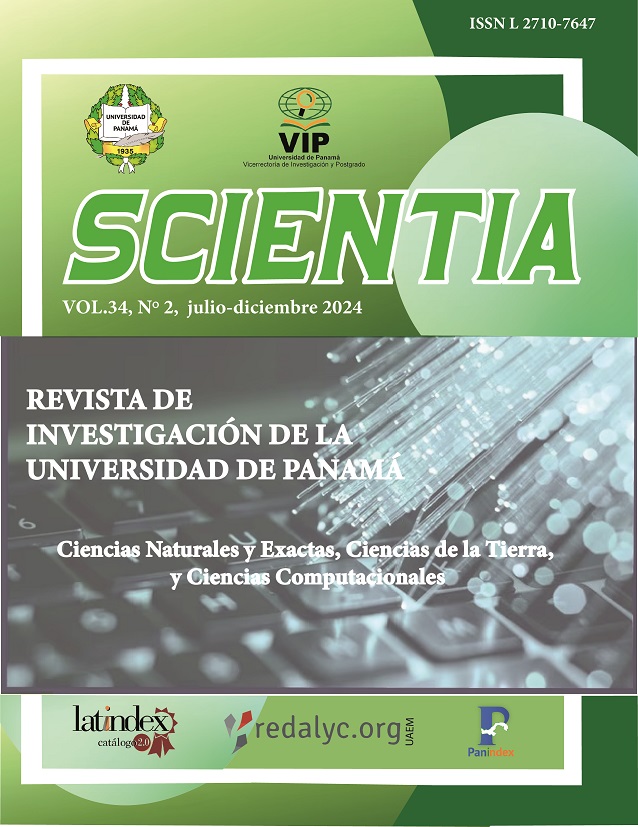

Copyright (c) 2024 Scientia

This work is licensed under a Creative Commons Attribution-NonCommercial-ShareAlike 4.0 International License.
In order to determine foliar damage caused by herbivory in Rhizophora mangle, Pelliciera rhizophorae, Laguncularia racemosa, and Avicennia germinans in a mangrove system from Pixvae, six expeditions were conducted in the months of June, August, and September of 2022, and January and February of 2023, each lasting 5 days. During these expeditions, five quadrants of 50 x 20 m (1,000 m2) were established. Quadrants two and three were positioned parallel to the coastline, while quadrants 1, 4, and 5 were located towards the innermost part of the mangrove. The vertices of each quadrant were georeferenced, delineated with synthetic fiber thread, and taxonomically inventoried, where mangrove species were identified. To determine the percentage of consumed foliar area in different canopy strata and in each individual tree, a systematic sampling was conducted in the three canopy strata: lower, middle, and upper. Three secondary branches were collected from different canopy strata, from which 50 mature leaves were randomly selected for each stratum, totaling 150 leaves per individual. The collected leaves were photographed, and the percentage of consumed foliar area was calculated using the BioLeaf application. The studied mangrove species exhibited significant differences in the percentages of consumed foliar area by herbivores (Kruskal-Wallis, GL=3, p=0.0001). Significant differences in total average consumed foliar area were also found among quadrants (Kruskal-Wallis, GL=4, p=0.0001).